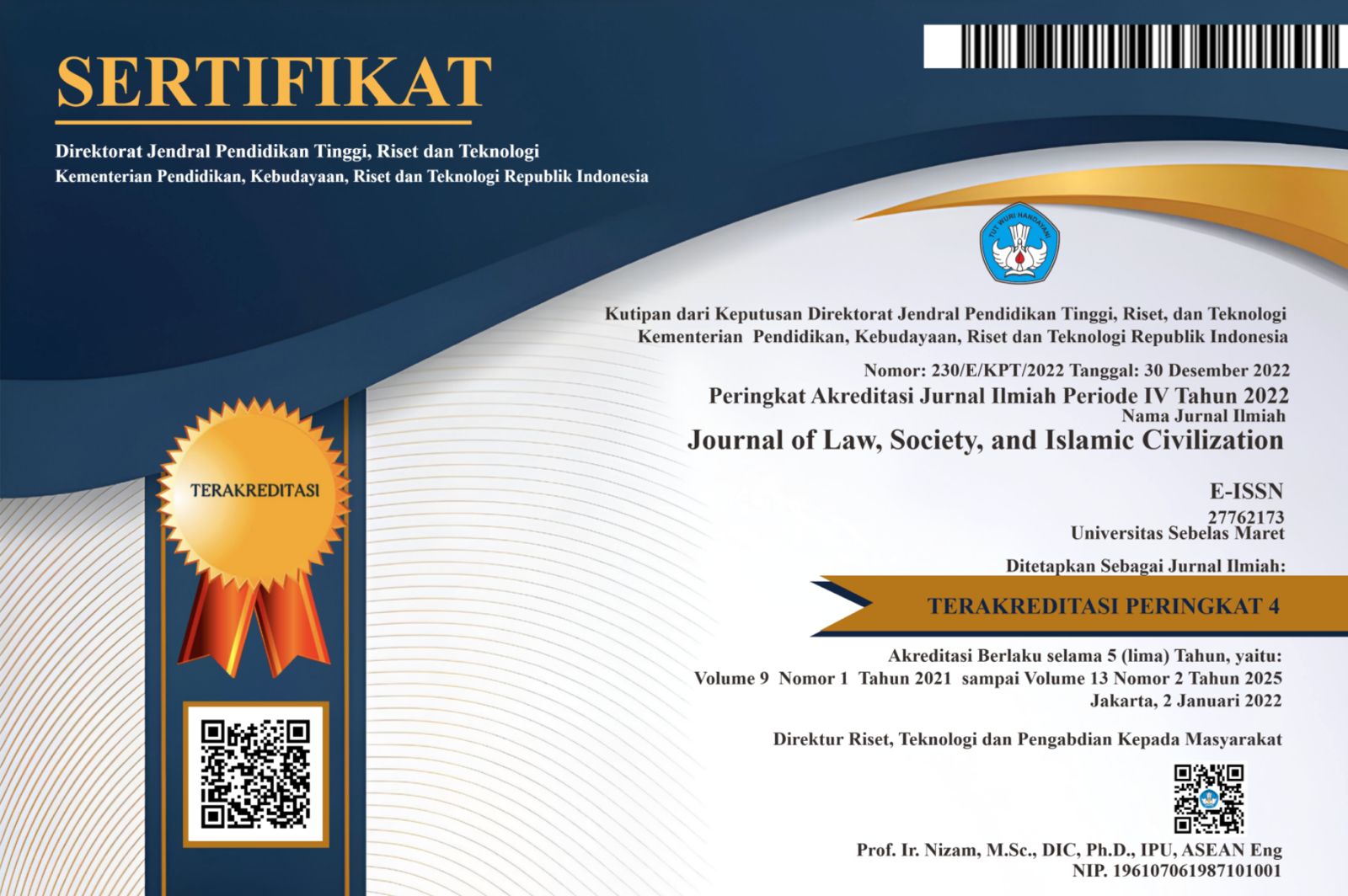Tinjauan Yuridis terhadap Risiko Perbankan dalam Layanan Letter of Credit
Abstract
Keywords
Full Text:
PDFReferences
Allen, L., & Bali, T. G. (2007). Cyclicality in Catastrophic and Operational Risk Measurement. Journal of Banking & Finance, 31(4), 1191–1235.
Amir MS. (1996). Seluk Beluk Dan Teknik Perdagangan Luar Negeri: Suatu Penuntun Ekspor-Impor. Jakarta: Pustaka Binaman Pressindo.
Badan Pusat Statistik. (2023). Produk Domestik Bruto Indonesia Menurut Pengeluaran 2018-2022. Jakarta: Badan Pusat Statistik.
Bank Indonesia. (2006). Implementasi Basel II di Indonesia. Jakarta: Bank Indonesia.
Bank Indonesia. (2011). Lampiran Surat Edaran Nomor 13/23/DPNP/2011 tentang Pedoman Penerapan Manajemen Risiko Secara Umum. Jakarta: Bank Indonesia.
Fransiskus, Y., & Tjung, R. (2022). Kasus L/C Fiktif BNI: Penyalahgunaan Letter of Credit Dalam Perdagangan Ekspor Impor Dalam Perspektif Tindak Pidana Pencucian Uang. Jurnal Ilmu Sosial dan Pendidikan (JISIP), 6(3), 2598–9944.
Ginting, R. (2007). Transaksi Bisnis dan Perbankan Internasional. (2nd ed.). Jakarta: Salemba Empat.
Hendrik, K. (2019). Kajian Yuridis Penggunaan Letter of Credit (L/C) dalam Transaksi Perdagangan Internasional. Lex Et Societatis, 7(3), 58–65.
International Commercial Chamber. (2007). Commentary on UCP 600. ICC Publication.
Kasmir. (2014). Dasar-dasar Perbankan (15th ed.). Depok: Rajawali Pers.
Maffuadi, & Khairani. (2020). Tinjauan Yuridis Terhadap Penggunaan Letter of Credit (L/C) Dalam Pelakasanaan Ekspor Impor Barang Di Indonesia. Jurnal Ilmiah Mahasiswa: Bidang Hukum Keperdataan, 4(2), 304–313.
Moerjono, A. (1993). Melangkah Menuju Ekspor: Suatu Petunjuk Praktis, Lembaga Pengembangan Perbankan Indonesia. Jakarta: Lembaga Pengembangan Perbankan Indonesia.
Muhamad Djumhana. (1993). Hukum Perbankan di Indonesia. Bandung: Citra Aditya Bakti.
Munir Fuady. (2003). Hukum Perbankan Modern (1st ed.). Bandung: Alumni.
Putra, W., & Widjaja, H. (2019). Penerapan Prinsip Kehati-Hatian dalam Penyaluran Kredit (Studi Kasus di Bank BRI Cabang Semarang). Refleksi Hukum: Jurnal Ilmu Hukum, 3(1), 81–96.
Warsidi, E. (2009). Letter of Credit: A Guide to the Impact of the New Rules of UCP 600. Surabaya: Komexindo Press.
Refbacks
- There are currently no refbacks.












